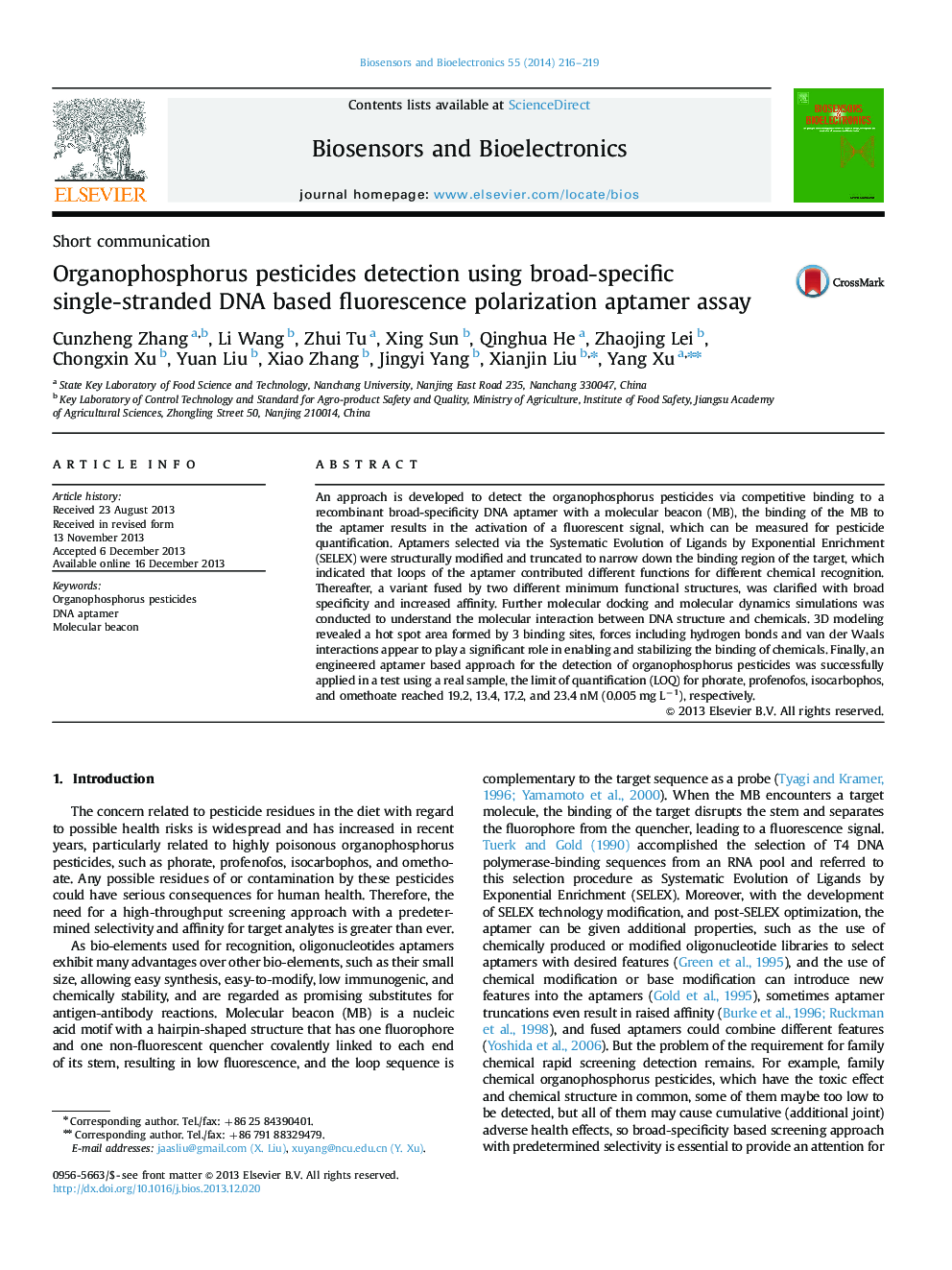| Article ID | Journal | Published Year | Pages | File Type |
|---|---|---|---|---|
| 866528 | Biosensors and Bioelectronics | 2014 | 4 Pages |
•Aptamers were structurally modified and truncated to narrow down the binding region.•Functional loops are associated with various specific contacts with chemicals.•Aptamer fused by minimum functional structures with affinity increased.•The molecular interaction between DNA structure and chemicals has been profiled.•The developed approach could simultaneously detect the co-existing chemicals.
An approach is developed to detect the organophosphorus pesticides via competitive binding to a recombinant broad-specificity DNA aptamer with a molecular beacon (MB), the binding of the MB to the aptamer results in the activation of a fluorescent signal, which can be measured for pesticide quantification. Aptamers selected via the Systematic Evolution of Ligands by Exponential Enrichment (SELEX) were structurally modified and truncated to narrow down the binding region of the target, which indicated that loops of the aptamer contributed different functions for different chemical recognition. Thereafter, a variant fused by two different minimum functional structures, was clarified with broad specificity and increased affinity. Further molecular docking and molecular dynamics simulations was conducted to understand the molecular interaction between DNA structure and chemicals. 3D modeling revealed a hot spot area formed by 3 binding sites, forces including hydrogen bonds and van der Waals interactions appear to play a significant role in enabling and stabilizing the binding of chemicals. Finally, an engineered aptamer based approach for the detection of organophosphorus pesticides was successfully applied in a test using a real sample, the limit of quantification (LOQ) for phorate, profenofos, isocarbophos, and omethoate reached 19.2, 13.4, 17.2, and 23.4 nM (0.005 mg L−1), respectively.
